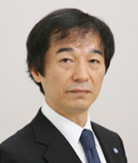
Eiji Miyoshi
Eiji Miyoshi MD and PhD, Professor and Chairman, Department of Molecular Biochemistry and Clinical Investigation, Osaka University Graduate School of Medicine
I graduated from Osaka University Graduate School of Medicine in 1986. After clinical training of Gastroenterology and Hepatology, I have been studying glycobiology. I became a professor in 2007 and was a dean of Osaka University Allied of Health Science in 2014-2015. I have been a director of the Center for Borderless Design of Medicine in Osaka University.
Research Interests: Research directed at understanding the biological functions of sugar chains at the cellular and molecular level and clinical investigation to many human disease including cancer, inflammation, DM and liver disease.
Regenerative medicine is one of many areas of modern medical care leveraging cutting-edge translational research. If cellular therapy is included in regenerative medicine, it has a substantially long history. The change in focus of researchers from embryology originally to regenerative medicine boosted the academic development of this field. Finally, the discovery of induced pluripotent stem (iPS) cells in 2006-2007 greatly pushed regenerative medical research forward, and with no exaggeration, regenerative medicine became a reality in practice. To promote the speedy and safe provision of regenerative medicine in Japan, The Act on the Safety of Regenerative Medicine went into effect and The Act on Pharmaceuticals and Medical Devices was amended in 2014. This enabled the quick and smooth supply of many regenerative medical products.
Glycans are, after proteins and nucleic acids, considered the third life chains, and academic progress in this field and clinical application have been anticipated. Many tumor markers and serum biomarkers used for clinical laboratory tests are sensitive to or affected by glycan changes in cancer and inflammation. We also previously tried to isolate liver stem cells, which was a hot topic at the time, using a glycomics technique 1. We used erythroagglutinating phytohemagglutinin (E4-PHA), a kind of lectin, to isolate cells from the livers of Long-Evans Cinnamon (LEC) rats, which spontaneously develop fulminant hepatitis 2, and found that the cells had liver progenitor-like traits. Then, we explored glycan markers of cancer stem cells by a glycomics approach 3,4. A series of studies revealed that the glycan is surely “the face of the cell”; the characteristics of a specific type of cell can be captured easily and comprehensively based on information about its glycans.
Application of glycan research to regenerative medicine has been advanced at Nagoya University by Professor Kenji Kadomatsu et al., who are tackling nerve regeneration. Their research is, in other words, a challenging pursuit to provide glycoscience-based insights into the nature of spinal cord injury, which cannot be effectively treated even by current medicine. The group of Professor Shoko Nishihara at Soka University is comprehensively studying stem cells and glycans in a variety of systems ranging from Drosophila to embryonic stem (ES) and iPS cells. In addition to these basic researches, studies by the group of Hiroaki Tateno, chief senior researcher at the National Institute of Advanced Industrial Science and Technology, practically applied glycoscience and lectins to iPS cell-based regenerative medicine, which became representative of “lectin medicine” research. We here introduce these three studies, which are the most common regenerative medicine-related glycan studies in Japan.
In this series, firstly the group of Professor Shinya Yamanaka at Kyoto University introduces research streams that address the history of regenerative medicine, from the game-changing discovery of iPS cells to the future development of this field. In addition, two topics in the clinical application of iPS cells, that is, clinical applications of regenerative medicine to diseases of the eye and to Parkinson’s disease, are described by Professor Motokazu Tsujikawa at Osaka University and Professor Jun Takahashi at Kyoto University, respectively. Although the contents of each article are summarized due to limitations inherent in the form of Glycoforum, we hope readers will enjoy the series of six different review articles. If you have a deeper interest in the topic, we encourage you to thoroughly read the original work.